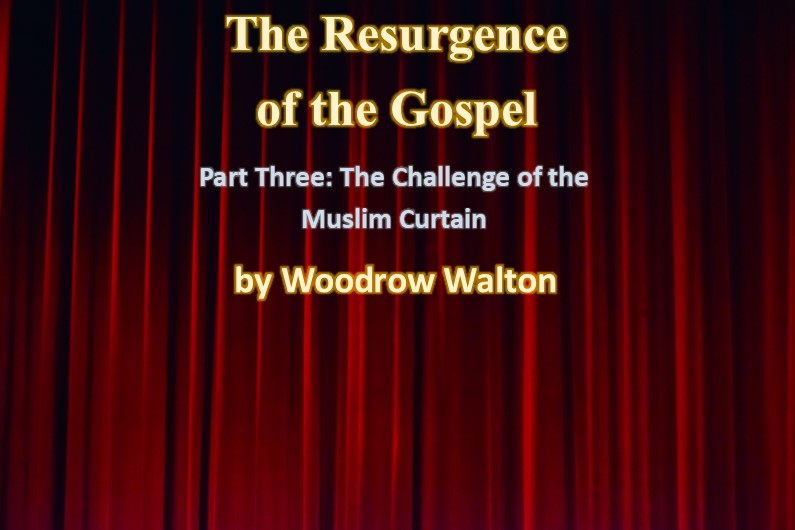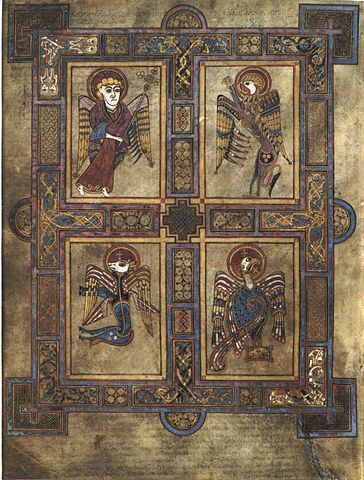The Resurgence of the Gospel, Part Three: The Challenge of the Muslim Curtain

The Resurgence of the Gospel and the Flowering of the Global Christian Message
Part Three: The Challenge of the Muslim Curtain Introduction
Through upheaval and suppression, being despised by civil governments and facing outright persecution, Christians survived on the other side of the Muslim Curtain. This is part of their story.
“The Turkic-Moslem Curtain” is the more appropriate explanation for what “shut-off” for an untold breadth of time any social intercourse between the East and West. It also deals more realistically with the relationship between the Arabic speaking Moslems and the increasingly Christian West. As terrible as the militancy of the Arab Conquests were, they never cut-off contact between Europe and Asia. Under the Arabic umbrella, Christians were consider dhimmi [under-class] by the Arabic-speaking Moslem rulers. At the same time, the Christians were admired for their talents, skills, and abilities and utilized according to their particular talents. Even the Jews were so treated. Some were physicians to the caliphs. It was also dependent upon the origin of the Arabic speaking Moslems.

This article is part of The Gospel in History series by Woodrow Walton.
Image: The Books of Kells by way of Wikimedia Commons.
Islam is not a monolithic religion. Historically, there are two distinct political practices. The Shi’a combine religion and political into a single system with their religious leaders doing the governing. The Shi’a also believe they are the legitimate descendants of Mohammed. The Sunni and Alawite Moslems separate Mosque from the body politic. Islam is sectarian. The Sufi are the Moslem mystics and are off in another direction and sometimes fade in and out.
Before Mohammed and his hegira (flight) to Medina, Christians from Antioch and from Egypt came into upper Arabia and down the western coast along the Red Sea. Most of the Arab Christians in southwestern Arabia were the product of Coptic missionaries out of Egypt and shared the Coptic understanding of the Trinity. Those who lived just east of the mountains east of the Dead Sea and northward toward Damascus came out of Antioch and shared the Nestorian understanding which stressed the humanity of Jesus. Mary was not a thetokos, but the mother of Jesus the man in whom dwelt the fullness of God.
The best reading on the Arab Christians are the books of Kenneth Cragg, an Anglican missionary and scholar from Great Britain who wrote such works as The Arab Christian: A History in the Middle East (Louisville, KY: Westminster/Joh Knox, 1991) and The Call of the Minaret (New York: Oxford University Press, 1956). In 2008, Sidney H. Griffith published a study entitled The Church in the Shadow of the Mosque (Princeton and Oxford, Princeton University Press).
How did the curtain fall?
Even then, there was no let-up of interchange between Asia and Europe until 1452 when Ottoman Turks invaded Anatolia, known variously as Asia Minor (geographically) or Turkey (geopolitically). While there was no direct west-to-east route going through either Antioch or Caesarea on the Mediterranean eastern seaboard travel, travel was possible from points north and northeast of Antioch.
One could also travel east from Alexandria to the Red Sea and travel it to where it empties into the Arabian Sea and thence to the Malabar Coast of India. Another point of departure was by way of the southern coastline of the Euxine Sea (Black Sea). One could board ship from Chalcedon, Amastris, and Sinope, all port cities in the Roman provinces of Bithynia and Pontus and to the Ukraine, one of the sources of grain for first Rome and then Constantinople. One could sail east along the coastline to Armenia and Georgia.
Category: Church History, Winter 2019


